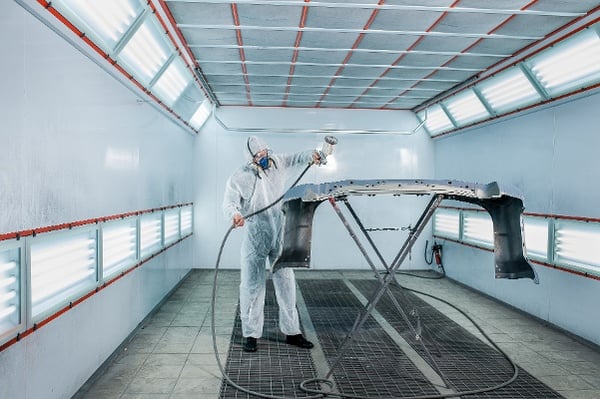
Fire suppression systems were created to provide an immediate response to fire in life-threatening situations. The first few minutes of a fire are critical to eliminating or containing the fire until help can arrive. Different environments mean different types of fire. Therefore, you cannot rely on one type of chemical to suppress every fire. This is why there are different types of fire suppression systems. The three common types used today are clean agent, wet chemical, and dry chemical fire suppression systems. In this blog, we will explore dry chemical fire suppression systems.
Dry chemical systems release a dry chemical powder into a designated space to extinguish a fire. Sodium bicarbonate and mono-ammonium phosphate are the most common powders used in dry chem suppression systems. Sodium bicarbonate is for Class B and some Class C fires. Monoammonium phosphate is for ABC fires. In a dry chemical suppression system, a tank is filled with the dry powder and pressurized. When the system is activated, a high-pressure nitrogen cartridge will discharge and open the valve on the pressurized tank with the dry powder. The agent is then released into the piping and out of the nozzles of the suppression system to suppress the fire. After each use, a dry chemical system must be recharged to work again. Dry chem systems are not a new technology, but they are extremely reliable. Much like an ABC fire extinguisher with dry powder, a dry chem system will dump a lot of powder onto the hazard when activated requiring extensive cleanup after each use.
Dry chem systems provide easy accessibility and are efficient to use because they are rechargeable, electrical extinguishing systems that are installed easily into commercial and industrial settings. Since they are non-conductive, they can be utilized to suppress fires in ordinary combustible materials and on flammable liquid fires that involve live electrical equipment.
Dry chem suppression systems are a great choice for areas where a fire sprinkler system is not available or not preferred. Some typical applications you’ll find these systems used for are auto paint booths, dip tanks, mixing rooms, and open-faced booths.
Dry chemical fire suppression systems must comply with NFPA 17 (Standard for Dry Chemical Extinguishing Systems) and NFPA 33 (Standards for Spray Application Using Flammable and Combustible Materials), and also tested to the new real-world criteria of UL 1254 (Standard for Pre-Engineered Dry Chemical Extinguishing System Units). It is always best to contact your Authority Having Jurisdiction for code interpretations.
Need a Dry Chemical Fire Suppression System? – Call the Experts
Installing a dry chemical fire suppression system in your facility is very economical. Dry systems are easily accessible and efficient at suppressing fires. Contact Koorsen Fire & Security to learn more about dry chem fire suppression systems for your business. One of the highly-trained and certified technicians can come out to assess your building and discuss the best options for your facility. Call Koorsen today to ensure your employees and assets are protected properly.


